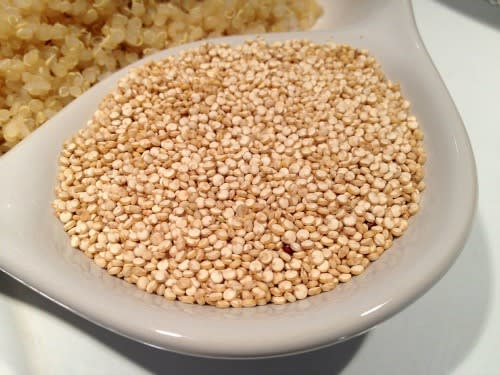Helping your Child Savor the Flavor
Published: March 31, 2016l
By Lisa Zarny, MS, RD, CD-N, Clinical Nutrition Manager, Angela Finn, Dietetic Intern
With National Nutrition Month’s theme of “Savor the Flavor of Eating Right”, it seems as if mindful eating is becoming the new health trend. However, while the idea of mindful eating seems to be the latest craze, we all have had experience in mindful eating as young children. Think about it, infants and toddlers are very connected with their senses; they ask for food when hungry, look, feel, smell, and taste their food before they eat, and often take a long time to eat before stopping when they are full. Something to keep in mind is developing this innate reaction to food in to a habit throughout the child’s life. In other words, mindful eating should be carried on throughout a person’s life.
Check out these strategies to promote a positive relationship with food and help your child mindfully eat:
- Involve your child. Take your child grocery shopping and encourage them to select colorful produce, or have your child help you in preparing a meal. This will get them interested in trying new foods. For the month of April, commit to exploring a new fruit or vegetable each week. Associate colorful produce with “eating the rainbow”, and prepare produce that includes their favorite color.
- Be a role model and encourage family time. Children look up to their parents; they often watch your actions closely, wanting to mimic you. Instead of turning the TV on, use meal times as a time to create family memories. One of the biggest principles of mindful eating is to direct all awareness to the feeding experience. When trying new foods, demonstrate being open to the food and having a “polite bite”—a bite of something new with purposes of solely trying the food. Having a “polite bite” can encourage children to try new foods, rather than having them feel like they are being forced to eat.
- Talk about food. Food is a great tool to help your child learn colors, shapes, and textures. While doing so, you can also teach your child how healthy foods are something that will help them grow. Use games or activity, such as these coloring sheets and word searches provided by the Academy of Nutrition and Dietetics, to boost healthy eating.
- Avoid using sweets as a reward. Using sweets as a reward to completing a task, such as finishing their meal or doing well in school, does not encourage children to eat healthy foods. A child may attach joy and success to unhealthy food such as ice cream and candy. Instead, make fruits and vegetables festive, reward with fun activities or special attention, and offer dessert occasionally.
Featured Expert/ Author











































